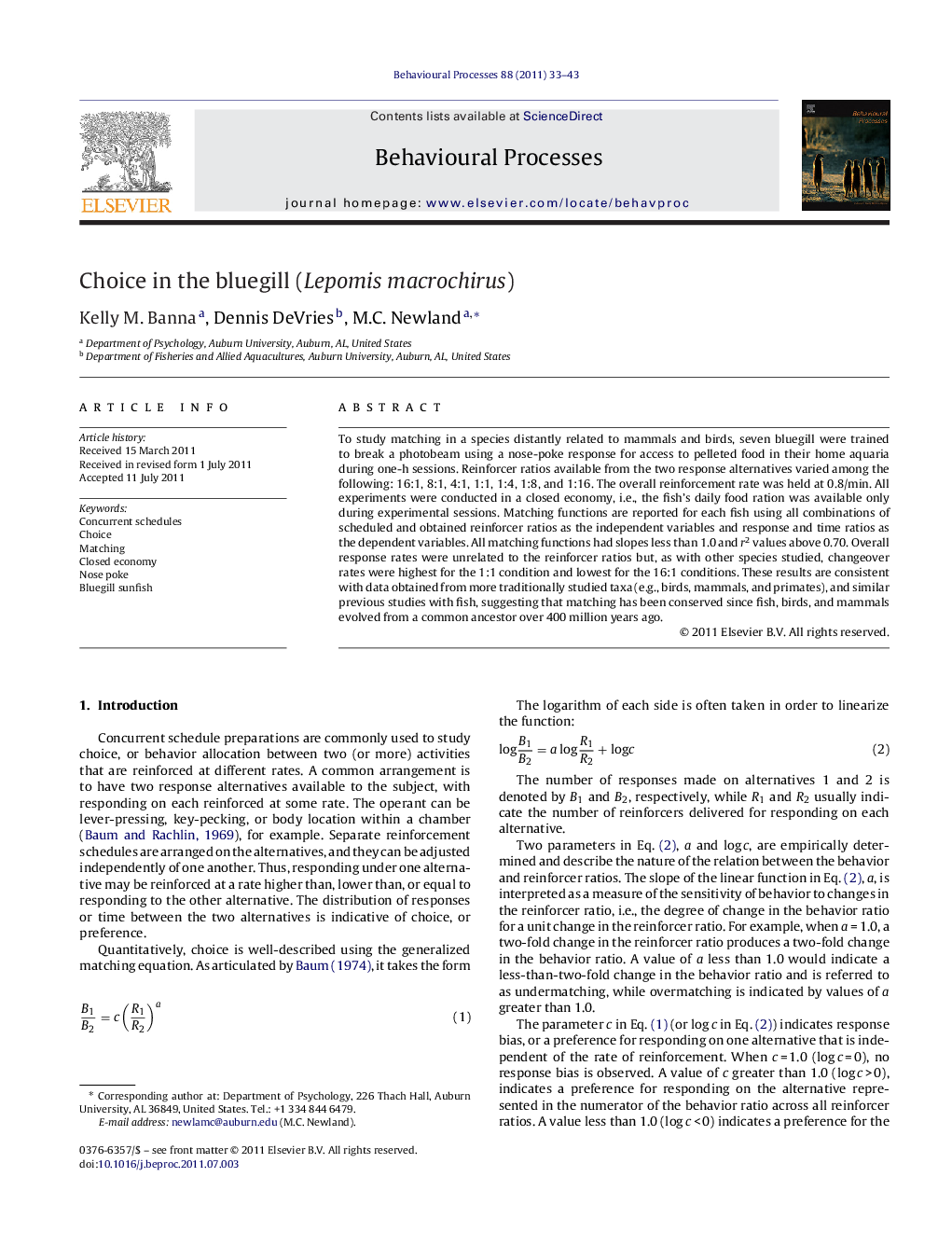| کد مقاله | کد نشریه | سال انتشار | مقاله انگلیسی | نسخه تمام متن |
|---|---|---|---|---|
| 2427112 | 1105945 | 2011 | 11 صفحه PDF | دانلود رایگان |

To study matching in a species distantly related to mammals and birds, seven bluegill were trained to break a photobeam using a nose-poke response for access to pelleted food in their home aquaria during one-h sessions. Reinforcer ratios available from the two response alternatives varied among the following: 16:1, 8:1, 4:1, 1:1, 1:4, 1:8, and 1:16. The overall reinforcement rate was held at 0.8/min. All experiments were conducted in a closed economy, i.e., the fish's daily food ration was available only during experimental sessions. Matching functions are reported for each fish using all combinations of scheduled and obtained reinforcer ratios as the independent variables and response and time ratios as the dependent variables. All matching functions had slopes less than 1.0 and r2 values above 0.70. Overall response rates were unrelated to the reinforcer ratios but, as with other species studied, changeover rates were highest for the 1:1 condition and lowest for the 16:1 conditions. These results are consistent with data obtained from more traditionally studied taxa (e.g., birds, mammals, and primates), and similar previous studies with fish, suggesting that matching has been conserved since fish, birds, and mammals evolved from a common ancestor over 400 million years ago.
► Bluegill are distantly related to mammals and birds, in which choice has been studied extensively.
► Seven bluegill earned their daily food ration under concurrent schedules arranged in their home aquaria in two sessions per day.
► Response rates ranged from 1 to 14 responses/min.
► Change-over rates were high when reinforcement rates from the two alternatives were equal, and low when reinforcement rates were asymmetric.
► Time and response allocation matched both obtained and programmed reinforcement rates.
► This extends the generalized matching law to a fish species working in a closed economy in a laboratory model of foraging.
Journal: Behavioural Processes - Volume 88, Issue 1, September 2011, Pages 33–43